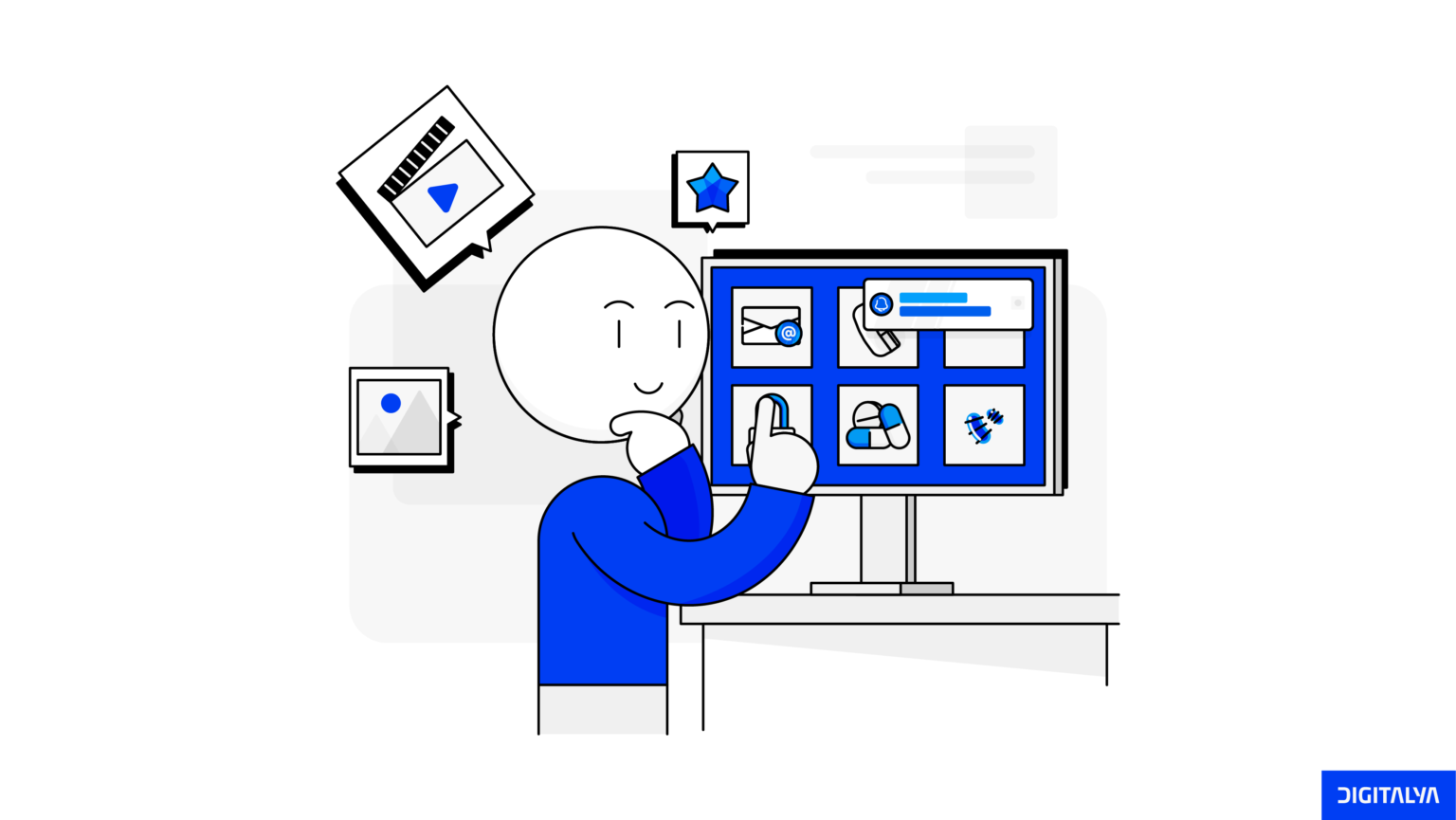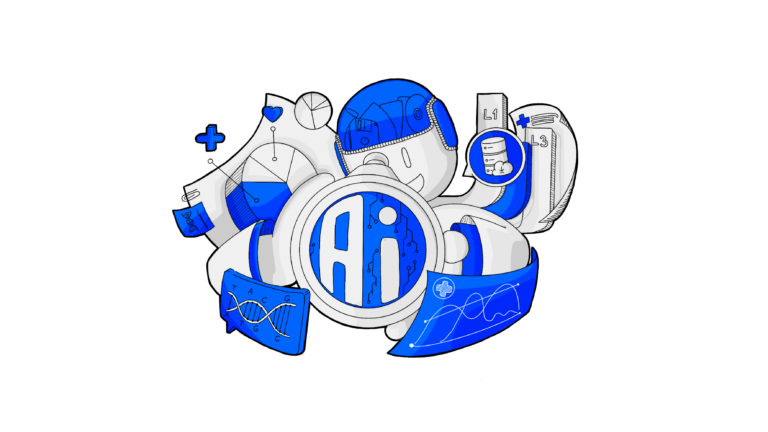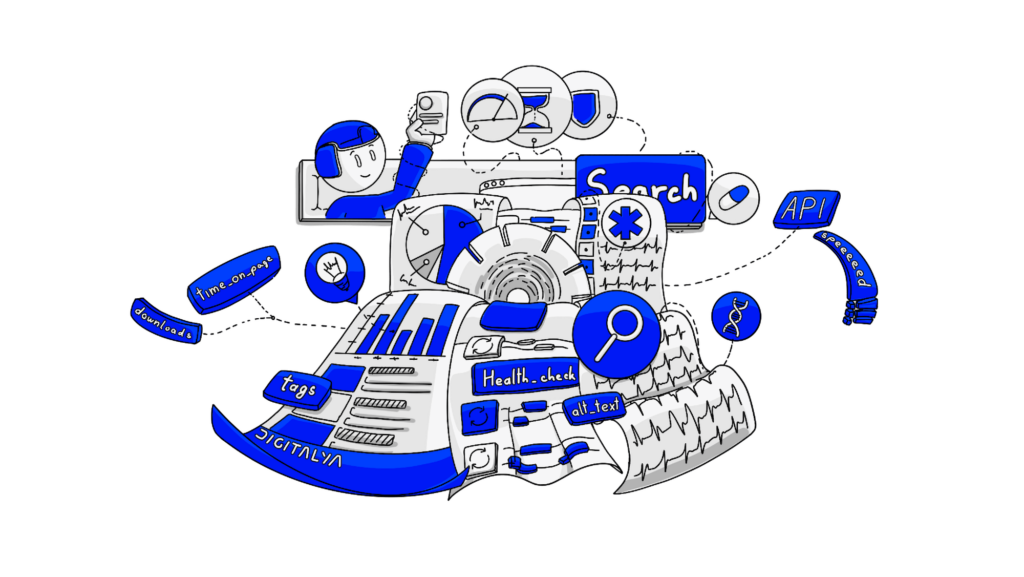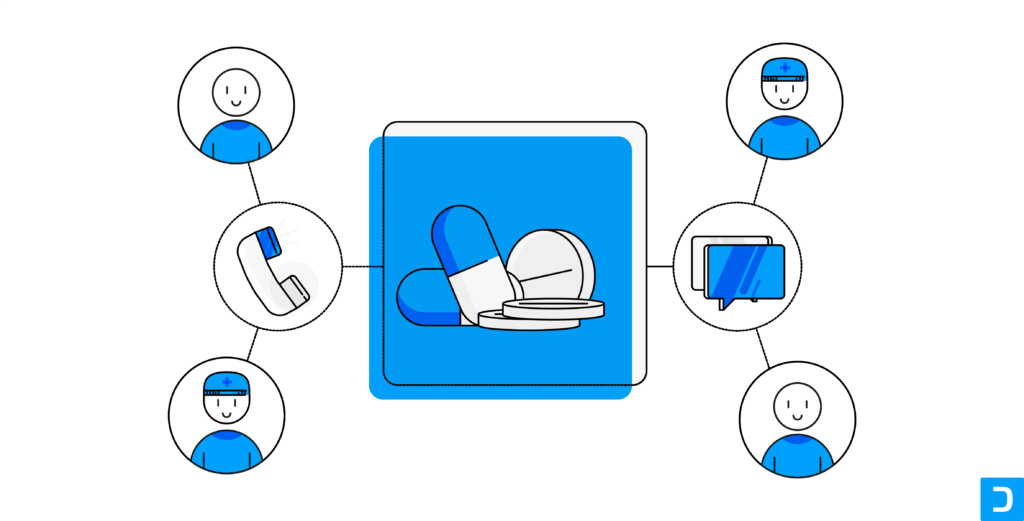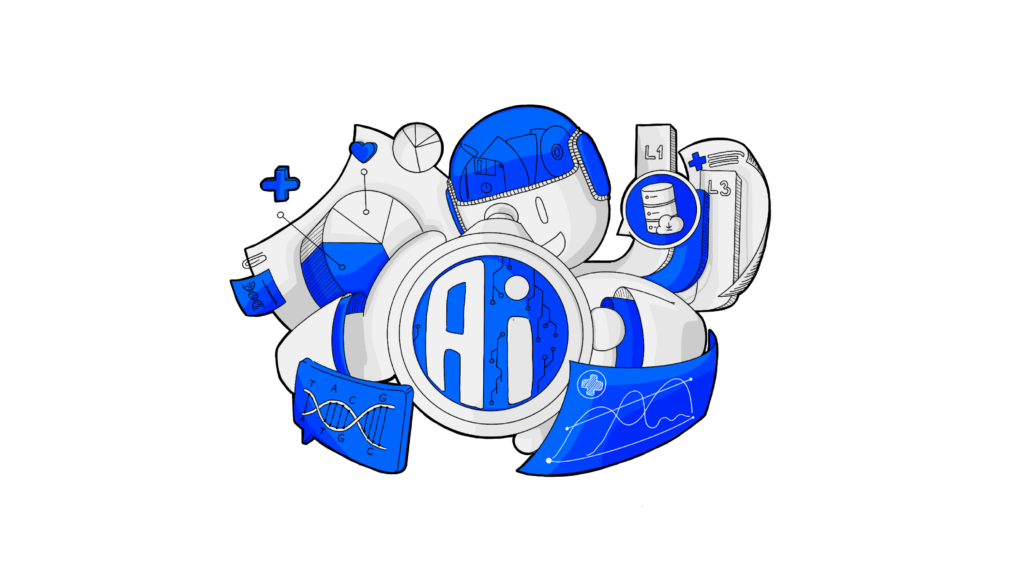Patient education platforms – a key technological advancement — have revolutionized how a healthcare organization can engage with patients, empower them to make informed decisions, and foster a more collaborative approach to managing their health.
This comprehensive guide will equip you with the knowledge and strategies to build a patient education platform that enhances engagement and improves patient outcomes.
Let’s embark on this journey together, revolutionizing patient care through the power of health education.
1. Introduction to Patient Education Platforms
Patient education platforms have emerged as a transformative force in the healthcare landscape. These platforms are centralized repositories of comprehensive and accessible educational resources, providing patients with personalized information tailored to their specific needs, conditions, and treatments.
1.1 Benefits of Implementing a Patient Education Platform
The need for patient education software stems from a growing recognition of the importance of patient engagement in the healthcare process. When patients are well-informed about their health, they are more likely to adhere to a treatment plan, make healthier lifestyle choices, and participate actively in their care. This leads to better patient health, reduced healthcare costs, and a more positive patient experience.
Here are some key benefits of a patient education platform:
- Enhanced patient understanding — patients are provided with accurate, up-to-date information about their condition, treatment options, and self-care strategies.
- Improved patient engagement — engaging and interactive educational content fosters a sense of ownership and empowers patients to take an active role in their healthcare.
- Enhanced adherence to treatment — well-informed patients are more likely to comply with a treatment plan, leading to better symptom management and improved health outcomes.
- Reduced healthcare costs — by preventing complications and reducing emergency room visits.
- Increased patient satisfaction — patient-centered education fosters trust and rapport between patients and providers, leading to a more satisfying healthcare experience.
1.2 Types of Patient Education Platforms
There are three main types of platforms — your choice will depend on the specific needs of your healthcare organization, target audience, and available resources.
- Web-based platforms — provide access to educational materials through a web browser, allowing patients to access content from any device with an internet connection.
- Mobile app platforms — offer a convenient and accessible way for patients to access educational materials on their mobile devices.
- Integrated platforms — seamlessly integrated into electronic health record (EHR) systems, providing patients with personalized education based on their medical records on their mobile devices.
2. Defining Platform Goals and Objectives
The foundation of a successful health education platform lies in clearly defined goals and objectives that align with the needs and aspirations of the target audience. This way, you can effectively measure the platform’s impact and make data-driven improvements.
2.1 Identifying Target Audience and Their Needs
Before the development phase, it’s essential to identify the target audience clearly. This involves understanding their demographics, health conditions, educational levels, and digital literacy skills.
Doing this allows you to tailor the platform’s content, design, and functionality to ensure maximum effectiveness.
2.2 Establishing Clear Learning Objectives and Outcomes
Once the target audience is identified, the next step is to establish clear learning objectives and outcomes. They should be specific, measurable, achievable, and aligned with the platform’s overall goals. For instance, a platform aimed at promoting adherence to a medication might have the following objectives:
- Increase the percentage of patients who correctly understand their medication regimen.
- Reduce the number of medication-related emergency room visits.
- Improve patient self-efficacy in managing their medication adherence.
2.3 Defining Key Performance Indicators (KPIs) for Success
KPIs provide a measurable framework for assessing the success of the patient education platform. They should be selected in alignment with the defined learning objectives and relevant to the target audience. Common KIPs for patient education solutions can include:
- Patient engagement metrics (page views, time spent on platform).
- Self-reported knowledge acquisition (quiz scores, surveys).
- Behavior change metrics (medication adherence rates, lifestyle changes).
- Healthcare cost reductions (emergency room visits, hospitalizations).
Tracking KPIs regularly can help you gain valuable insights into the platform’s effectiveness and identify areas for improvement.
3. Content Development and Management
Patient education platforms can be more effective if personalized to patients’ needs and preferences. You can do this in a few ways:
- Using adaptive learning algorithms — these algorithms tailor the content to the patient’s progress and learning style.
- Allowing patients to track their progress — helps patients stay motivated and engaged.
- Providing recommendations for additional resources — this can help patients find the information they need to improve their health.
By tracking patient engagement and learning outcomes, you can identify areas for improvement in your platform. This feedback loop continuously allows you to refine your content, design, and functionality.
Before moving forward, here are some additional points that you should keep in mind for your content:
- Accessibility for patients with disabilities – use alt text for images, provide text-to-speech options, and make the platform compatible with assistive technologies.
- Cultural sensitivity and language diversity – consider your target audience’s cultural and linguistic needs when creating content. Provide content in multiple languages and avoid culturally insensitive language.
- Security and privacy compliance — ensure that your portal complies with all relevant data privacy and security regulations. Protect patient information by using secure databases and encryption technologies.
3.1 Creating High-Quality and Engaging Educational Content
Any patient education platform’s success hinges on the quality and relevance of its content. High-quality health content should be accurate, clear, concise, and easy to understand. It should also be culturally sensitive and tailored to the target audience’s specific needs.
Here are some key principles for creating effective educational content:
- Use simple language and avoid jargon — patients often have varying levels of health literacy, so it is important to use language that is easy to understand. Avoid medical jargon and technical terms unless necessary.
- Explain concepts in multiple ways — different people learn in various ways, so provide information in multiple formats, like text, images, videos, and interactive tools.
- Use real-life examples — personal stories and relatable scenarios can help patients connect with the content and make it more relevant to their own lives.
- Incorporate visuals -— images, diagrams, and videos can break up content, making it more engaging.
- Use active voice — this makes the content more engaging and easier to understand.
3.2 Addressing Diverse Learning Styles and Needs
As we discussed before, patients have different learning styles and preferences. Some people prefer to learn by reading, while others prefer to watch videos or listen to audio. To educate patients with their preferred method, it is important to offer a variety of content formats:
- Text — articles, blog posts, and brochures.
- Videos — educational videos, patient testimonials, and case studies.
- Images – illustrations, diagrams, and infographics.
- Interactives — quizzes, simulations, and games.
4. Platform Architecture and Design
Patient engagement software should have an architecture and design that boosts patient experience. A well-designed platform should be user-friendly, accessible, and scalable to accommodate a growing user base.
Remember to take into account data privacy and security. From data protection to encryption (SSL/TLS), access control, and conducting regular security audits, it’s vital to adhere to privacy regulatory standards.
There are three common architecture models for patient education platforms, each with its own pros and cons:
- Three-tier architecture — this model separates the platform into three layers: presentation, application, and data access. Each layer has a specific function, making the platform more modular and scalable.
- Microservices architecture — the platform is broken down into smaller, independent services that communicate with each other through APIs. This approach enhances flexibility and enables faster development and deployment.
- Cloud-based architecture — the platform is deployed on cloud infrastructure, providing scalability, redundancy, and reduced maintenance costs.
4.1 Choosing a User-Friendly and Accessible Platform
The design of your platform should prioritize user-friendliness, accessibility, and patient engagement. This means you should have these points in mind:
- Intuitive navigation — easy to navigate, with clear menus and consistent design elements.
- Responsive design — your platform should adapt to different screen sizes and devices, ensuring a seamless patient experience across desktops, tablets, and smartphones.
- Simplified language and layout — use simple language, clear text, and uncluttered layouts to make it easy for your patients to understand and interact with the content.
- Accessibility compliance — adhere to relevant accessibility guidelines and standards, such as WCAG 2.1, to ensure the platform is inclusive and usable by a range of users.
- Visual appeal and engagement — incorporate elements like high-quality images, diagrams, and interactive elements to break up text and make the content more engaging.
4.2 Ensuring Compatibility across Devices and Browsers
Your platform should be compatible with a wide range of devices and browsers, ensuring patients can access educational materials from anywhere and on any device they prefer. This includes:
- Mobile-friendliness — the platform should be optimized for mobile devices, allowing patients to access content easily and conveniently on their smartphones and tablets.
- Cross-browser compatibility — the platform should work seamlessly with popular web browsers, such as Chrome, Firefox, and Safari.
4.3 Integrating with Existing IT Systems and Electronic Health Records (EHRs)
The patient engagement platform should be integrated with existing healthcare systems, such as EHRs, to provide a more seamless and personalized experience. Here are some features you should consider:
- EHR integration — seamlessly integrate with the EHR system to provide personalized recommendations and access to relevant patient information.
- Single Sign-On (SSO) — implement SSO to enable patients to easily sign in to the platform using their existing credentials from the EHR or other healthcare portals.
- Data sharing and interoperability — ensure compatibility with existing data standards and interoperability protocols to facilitate seamless data exchange between the platform and other healthcare systems.
5. Implementation and Deployment
Effective implementation and deployment of a patient education platform are essential for ensuring its successful adoption and utilization among patients. A well-structured implementation process involves careful planning, testing, and integration with existing healthcare systems.
We’ve already covered some of these steps, but we’ll still mention them here for a short recapitulation.
The first step of this phase is planning and preparation, which includes:
- Defining the project scope and goals — clearly identify the platform’s objectives and how it will align with the organization’s overall healthcare strategy.
- Assemble a cross-functional team — bring representatives from various departments, such as clinical staff, IT specialists, marketing professionals, and patient advocates.
- Establish a project timeline — break down the project into manageable phases and set realistic deadlines for each milestone.
- Identify and allocate resources — allocate the necessary resources, including budget, personnel, and technology, to support the project’s execution.
- Conduct user research and testing — gather feedback from potential users to identify their needs, preferences, and pain points. Also, conduct user testing to refine the platform’s usability and functionality.
- Develop training materials and support resources — create training materials for staff members on using the platform effectively and provide support resources for patients.
5.1 Integration with existing systems
Smooth assimilation with existing healthcare systems, such as EHRs and patient portals, is crucial to ensure that the platform is seamlessly integrated into the patient’s care journey. This can involve:
- Standardizing data formats — the data exchanged between the patient education platform and existing systems should be in compatible formats.
- Developing APIs — create application programming interfaces (APIs) that allow the platform to communicate with other systems and exchange data securely.
- Implementing workflow integrations — integrate the platform into existing workflows, such as appointment scheduling and discharge instructions, to provide relevant educational resources at appropriate times.
5.2 Deployment and rollout
This step required careful management to ensure a smooth transition and minimize disruption to patient care. These are some of the points that the process should include:
- Conducting pilot testing — conduct a pilot testing phase with a limited group of patients to identify any issues or areas for improvement.
- Communicating with patients — educate patients about the new platform and its benefits and provide clear instructions on accessing and using it.
- Monitoring and evaluating — continuously monitor platform usage, engagement metrics, and patient feedback to identify areas for improvement.
6. Evaluation and Continuous Improvement
This phase is important to make sure that your platform remains relevant, engaging, and effective in achieving the proposed goals. By tracking key performance indicators (KPIs), gathering feedback, and making data-driven changes, you can optimize your platform to achieve the desired outcomes.
What KPIs should you have your eyes on, and how should you measure them?
- Web analytics — track website traffic, page views, time spent on site, and other user behavior metrics.
- Surveys — collect patient feedback about their experience with the platform, learning outcomes, and their level of satisfaction.
- Pre- and post- tests — assess knowledge acquisition before and after engaging with the platform’s educational content.
- A/B testing — compare different versions of content or features to determine which ones are more effective.
- Patient observation — observe patient interactions with the platform to identify usability issues and areas for improvement.
- Behavior change data — monitor patient outcomes related to the platform’s objectives, such as medication adherence rates, lifestyle changes, and healthcare utilization.
The evaluation and improvement process should be ongoing, with regular data collection, feedback gathering, and analysis. By continuously refining the platform based on evidence-based insights, you can ensure that it remains effective and sustainable in improving patient outcomes.
Patient education platforms are improving how healthcare organizations empower patients, engaging with them and helping them make informed decisions. They foster a more collaborative approach to care management.
As digital health advances, these platforms will play a more pivotal role in shaping the future of healthcare. With these innovative tools, care teams can encourage patients to become active partners in their care, ultimately leading to better health outcomes.
Suggested further reading:
- The HCP Portal development process — a complete guide
- Revolutionizing healthcare: how software development powerd digital transformation in pharma companies
- Dynamic content for HCP Portals — empowering lifelong learnings
- Insourcing vs. Outsourcing pharmaceutical software development — the tradeoffs
